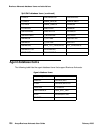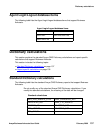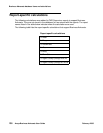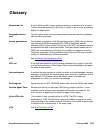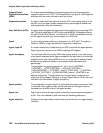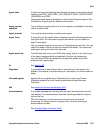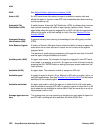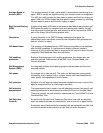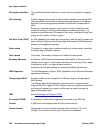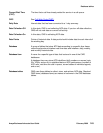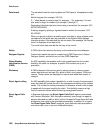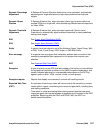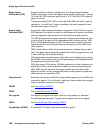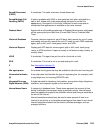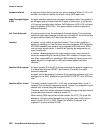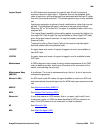
Call surplus condition
144 Avaya Business Advocate User Guide February 2006
Call surplus condition The condition that exists when one or more calls are queued for a specific
skill.
Call vectoring A switch feature that provides a highly flexible method for processing ACD
calls using VDNs and vectors as processing points between trunk groups
and skills. Call vectoring permits treatment of calls that is independent of
skills.
Similar to a computer program, a call vector is a set of instructions that
control the routing of incoming calls based on conditions that occur in a
contact center environment. Examples of call vector conditions include time
of day and the number of calls in queue.
Call Work Code (CWC) An ACD capability that makes sure that during or after the call, the agent can
enter a string of digits and send these digits to the switch Call Management
System for management reporting.
Caller needs The reason or reasons that a customer calls your contact center (used with
the Expert Agent Selection feature).
Calls carried Trunk data. The number of inbound and outbound calls carried.
Business Advocate A collection of ECS features that provide new flexibility in the way a call is
selected for an agent in a call surplus situation and in the way that an agent
is selected for a call in an agent surplus condition.
Advocate also includes methods for automating staffing adjustments.
CMS Supervisor The Call Management System (CMS) application for the Microsoft Windows
operating environment.
Change Agent Skills An agent’s skills can be changed from CMS by using the Change Agent
Skills window.
The Change Agent Skills dialog box allows the user to change the skill
assignments for one agent. On this window a user can quickly see what skills
are currently assigned to an agent and the user can easily change the
agent’s skill assignments.
CMS See Call Management System (CMS)
.
Connected (CONN) A trunk state. A caller and an agent are connected on an ACD call.
Current A CMS action that displays data from the current interval.
Current Interval Represents the current intrahour interval, which can be 15, 30, or 60
minutes. The current interval is part of the real-time database.



